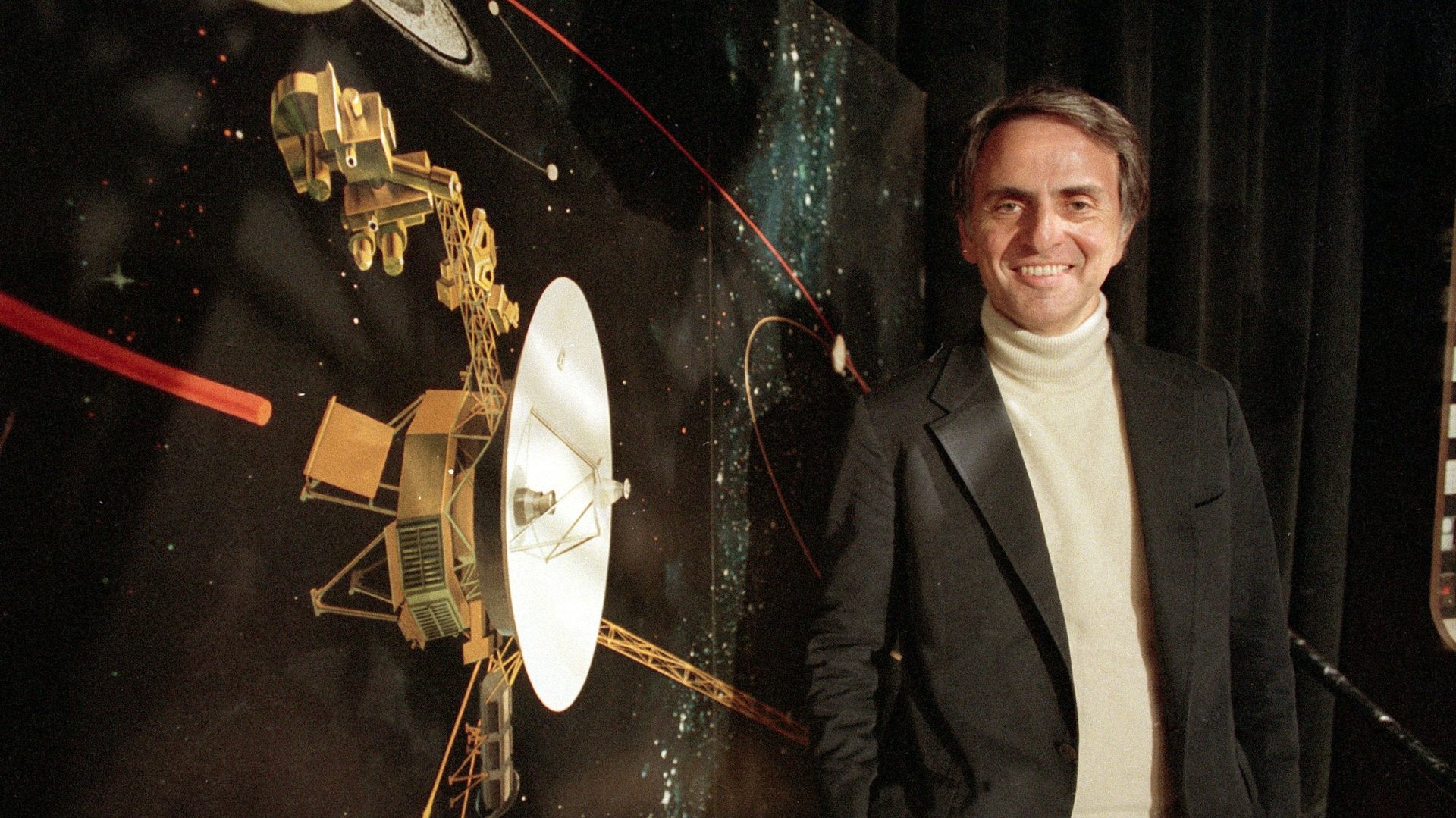Lie-proof your life with Carl Sagan’s “baloney detection” checklist
We don’t live in a post-truth era, despite claims to the contrary. Facts exist as stubbornly as they did before. But we do live in a time when highly-placed people in government and media are actively undermining the idea that there is such a thing as verifiable truth by propagating untruths at dizzying speeds. You can call these falsehoods “weaponized lies,” as the psychologist Daniel J. Levitin does. Or you can call them what the late astronomer Carl Sagan might have: baloney.


We don’t live in a post-truth era, despite claims to the contrary. Facts exist as stubbornly as they did before. But we do live in a time when highly-placed people in government and media are actively undermining the idea that there is such a thing as verifiable truth by propagating untruths at dizzying speeds. You can call these falsehoods “weaponized lies,” as the psychologist Daniel J. Levitin does. Or you can call them what the late astronomer Carl Sagan might have: baloney.
Written the year before he died, Sagan’s 1995 book The Demon-Haunted World: Science As a Candle in the Dark (the full text is available on the Internet Archive) contains a chapter delightfully titled “The Fine Art of Baloney Detection.” After running through a list of claims from pseudoscientists, mediums, and homeopaths, Sagan makes his diagnosis:
These are all cases of proved or presumptive baloney. A deception arises, sometimes innocently but collaboratively, sometimes with cynical premeditation. Usually the victim is caught up in a powerful emotion—wonder, fear, greed, grief. Credulous acceptance of baloney can cost you money; that’s what PT Barnum meant when he said, “There’s a sucker born every minute.” But it can be much more dangerous than that, and when governments and societies lose the capacity for critical thinking, the results can be catastrophic, however sympathetic we may be to those who have bought the baloney.
Sagan saw scientists as the natural first line of defense against an onslaught of nonsense.
In the course of their training, scientists are equipped with a baloney-detection kit. The kit is brought out as a matter of course whenever new ideas are offered for consideration. If the new idea survives examination by the tools in our kit, we grant it warm, although tentative, acceptance.
The kit, Sagan explained, consists of the fundamental principles of scientific skepticism. A dispassionate review of the evidence behind a claim, with an eye for fallacious or fraudulent arguments, is the best way to vanquish baloney, in its benign and insidious forms.
Think of the kit as a checklist of challenges for yourself when evaluating new or suspect information. As with all exercises, repetition will make you stronger and better. Sagan lays out the steps:
Wherever possible there must be independent confirmation of the “facts.”
Encourage substantive debate on the evidence by knowledgeable proponents of all points of view.
Arguments from authority carry little weight—“authorities” have made mistakes in the past. They will do so again in the future. Perhaps a better way to say it is that in science there are no authorities; at most, there are experts.
Spin more than one hypothesis. If there’s something to be explained, think of all the different ways in which it could be explained. Then think of tests by which you might systematically disprove each of the alternatives. What survives, the hypothesis that resists disproof in this Darwinian selection among “multiple working hypotheses,” has a much better chance of being the right answer than if you had simply run with the first idea that caught your fancy.
Try not to get overly attached to a hypothesis just because it’s yours. It’s only a way-station in the pursuit of knowledge. Ask yourself why you like the idea. Compare it fairly with the alternatives. See if you can find reasons for rejecting it. If you don’t, others will.
Quantify. If whatever it is you’re explaining has some measure, some numerical quantity attached to it, you’ll be much better able to discriminate among competing hypotheses. What is vague and qualitative is open to many explanations. Of course there are truths to be sought in the many qualitative issues we are obliged to confront, but finding them is more challenging.
If there’s a chain of argument, every link in the chain must work (including the premise)—not just most of them.
Occam’s Razor. This convenient rule-of-thumb urges us when faced with two hypotheses that explain the data equally well to choose the simpler.
Always ask whether the hypothesis can be, at least in principle, falsified. Propositions that are untestable, unfalsifiable are not worth much. Consider the grand idea that our Universe and everything in it is just an elementary particle—an electron, say—in a much bigger Cosmos. But if we can never acquire information from outside our Universe, is not the idea incapable of disproof? You must be able to check assertions out. Inveterate skeptics must be given the chance to follow your reasoning, to duplicate your experiments and see if they get the same result.